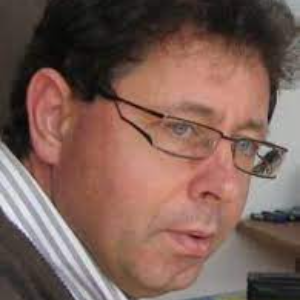Title : Oxygen on rutile TiO2(110) surface: AFM manipulation of charge state and molecular bond
Abstract:
We show that charge states of adsorbed oxygen adatoms on rutile TiO2(110)-1×1 surface can be measured and deliberately manipulated by a combination of noncontact atomic force microscopy and Kelvin probe force microscopy at 78 K in ultrahigh vacuum and interpreted by extensive density functional theory modeling. Several kinds of single and double oxygen adatom species are clearly distinguished and assigned to three different charge states: Oad-/2Oad-, Oad2-/2Oad2- and Oad--Oad2-. We also show that a single ? double charge manipulation on individual oxygen adatoms can be performed simply by modification of frequency shift (tip-sample distance) and the role of the excess charge (polarons) due to the defect presence understood. In addition, for the first time, we show, by means of AFM experiments, that two single oxygen atoms placed on rutile TiO2 (110) surface undergo a series of reversible chemical reactions or adatom charging in a controlled manner, depending on precise tip placement and voltage applied. We observe the reversible bond formation (association) and destruction (dissociation) between two oxygen atoms (2Oad2- ? O22-) by simply removing or adding (two) tunneling electrons to or from the AFM tip, respectively. We unambiguously prove that the observed processes are indeed due to charge rather than atom manipulation, i.e. are electron-mediated. The reliability of the observed bond formation will qualify this simple manipulation method as a new atom-molecular switch system on a semiconductor surface.
Audience take away:
• The talk will introduce an important catalytic system, rutile TiO2, where the defects feature charged polarons crucial for catalysis.
• We will show that oxygen can form different charge states on the surface and the charge states can be manipulated via AFM/KPFM.
• In addition to charge manipulation we will also show a reversible AFM/KPFM bond manipulation allowing for novel atom-molecular switch.
• We will show how the experimental observations can fully be rationalized via atomic-scale modeling.
• These top-end of the line manipulations are stretching the limits of current nanotechnologies.



